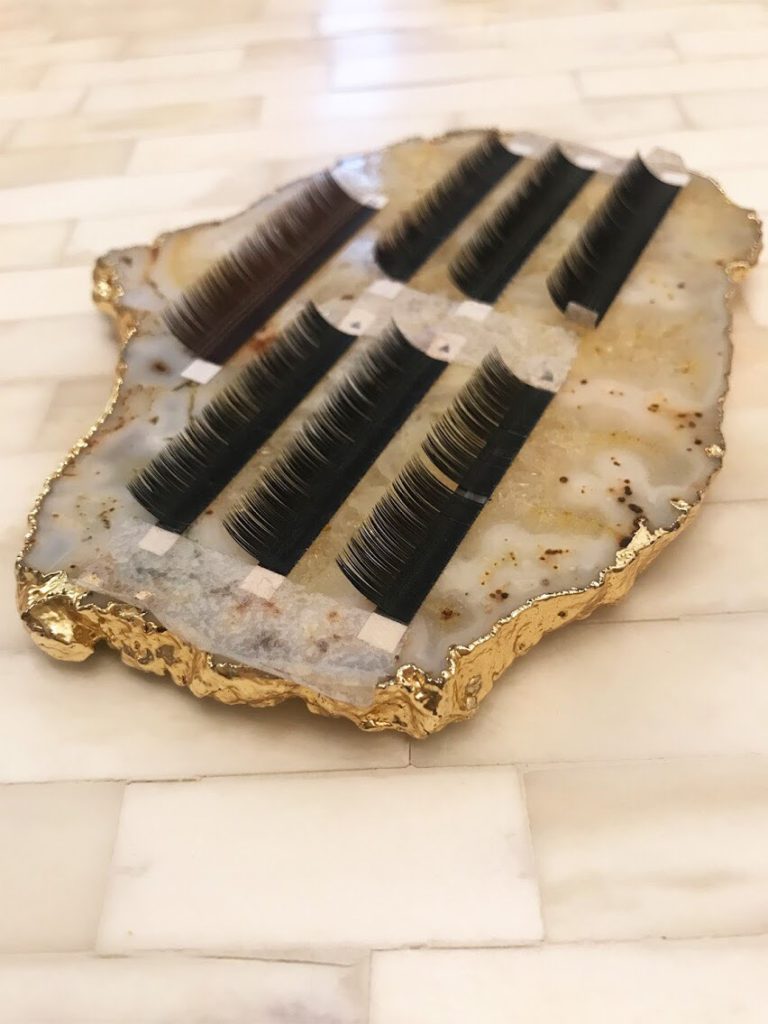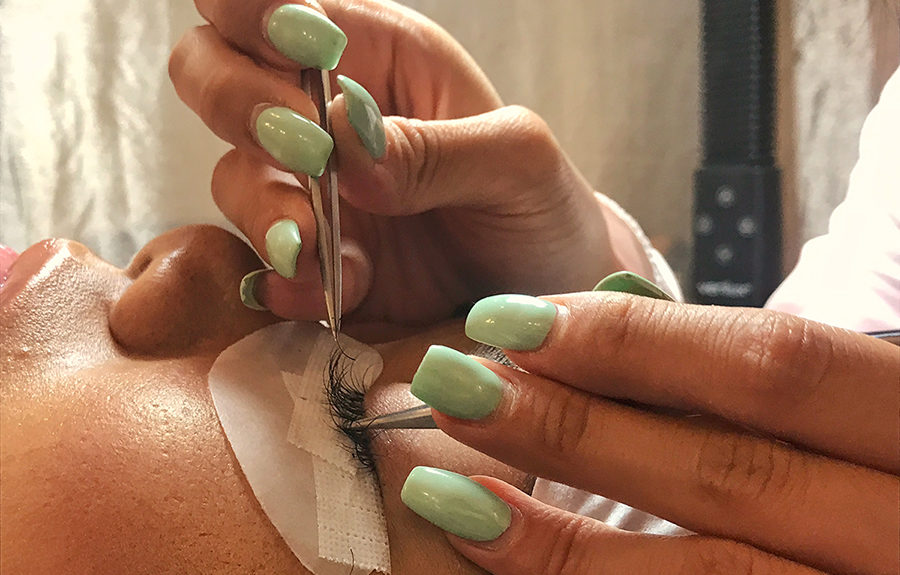Lifestyle & Culture
Fake Eyelashes. An “Addiction?”
By Jiwon Estee Yi
Staff writer
The eyelash technician taped a small white pad, shaped like a half-moon, under her client’s bottom row of eyelashes. With the help of an extra-bright overhead light and tweezers, the technician, one by one, isolated each of her client’s natural lashes. Atop each natural lash, she glued on a fake one.
Those eyelash extensions are part of a growing trend. More and more women are buying fake eyelashes. These lashes go by different names: individual lash extensions, lash lifts, false lash strips (known as ‘falsies’). They’re different methods for achieving the same goal of making lashes longer, thicker, lusher, more noticeable.
 A selection of available eyelashes at Salon de Beauté.
A selection of available eyelashes at Salon de Beauté.
“I wear falsies because I have short, straight, tiny, Asian eyelashes. Sometimes I want to look a bit more glam without doing too much work,” Stephanie Chen, 24, who occasionally uses falsies to elevate her look, wrote in an email to this reporter.
“I feel naked without them,” Jenny Lei, 23, also wrote in an email.
“Nice eyebrows like Brooke Shields, long eyelashes like Ariana Grande, everybody looks for that kind of look,” Minyoung “Jenny” Son, owner of Soho’s eyeLure Lash Boutique, told this reporter. “But not everyone is born that way. So, we always want to enhance.”
Eyelash enhancements range in price and style. There are tightly curled individual lash extensions and ones whose tips are colored in rainbow shades. Falsies made as one strip of eyelashes are sold at deep discounts at dollar stores. But, individual eyelash extensions can cost anywhere from $100 to $500 for one full set per eye. This price depends on several factors, including what the lashes are made of and how many lashes are being used. Between individual and single lashes are fake mini-strips; shorter than a single strip of falsies, they can be trimmed and glued on.
Individual lash extensions are the hardest to maintain. To make sure the glue stays on, the lashes should, during the first 24 hours of the procedure, avoid water. Beyond that, lash extension wearers should never use oil-based facial cleansers and they should try to avoid humidity, among other things, according to eyelash salon owners.
Eyelash enhancements do, however, present possible health risks, including allergic reactions, irritation, infection and loss of one’s natural lashes, according to health professionals interviewed by Consumer Reports and the medical journal, The Optometry Times.
But risks don’t stop some women from buying their lashes.
“When we draw pictures, we always emphasize eyelashes, even if we don’t see them,” SoHo salon owner Son said. “Hands and nails we can see … with our own eyes. But eyelashes? You can’t even see yourself until you see the mirror.”
Her clients range in age. The oldest is 90. “She comes almost two times a year every time she goes on a cruise with her boyfriend,” Son said. “It’s so cute.”
And, for some people, it’s an addiction.
“The eyes are very capturing. For [clients], they look in the mirror every day and they look at their eyes and … notice every little thing about them,” said Claire Chung, a receptionist at Salon de Beauté in the Financial District. “They feel like, ‘Why do I look so undone?’ And that’s when the addiction starts … they just keep coming back.”


